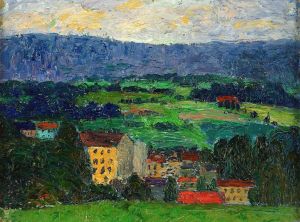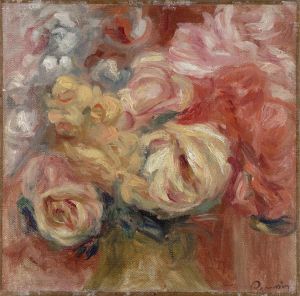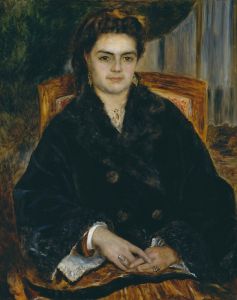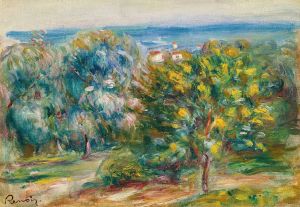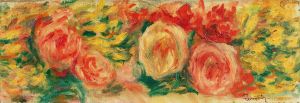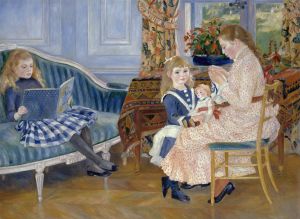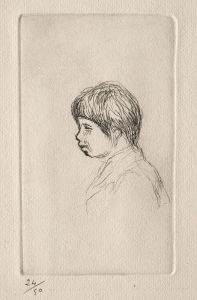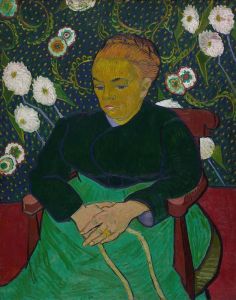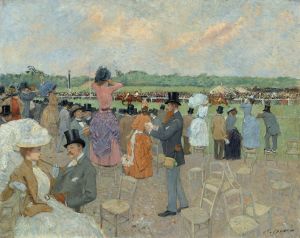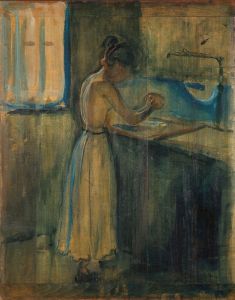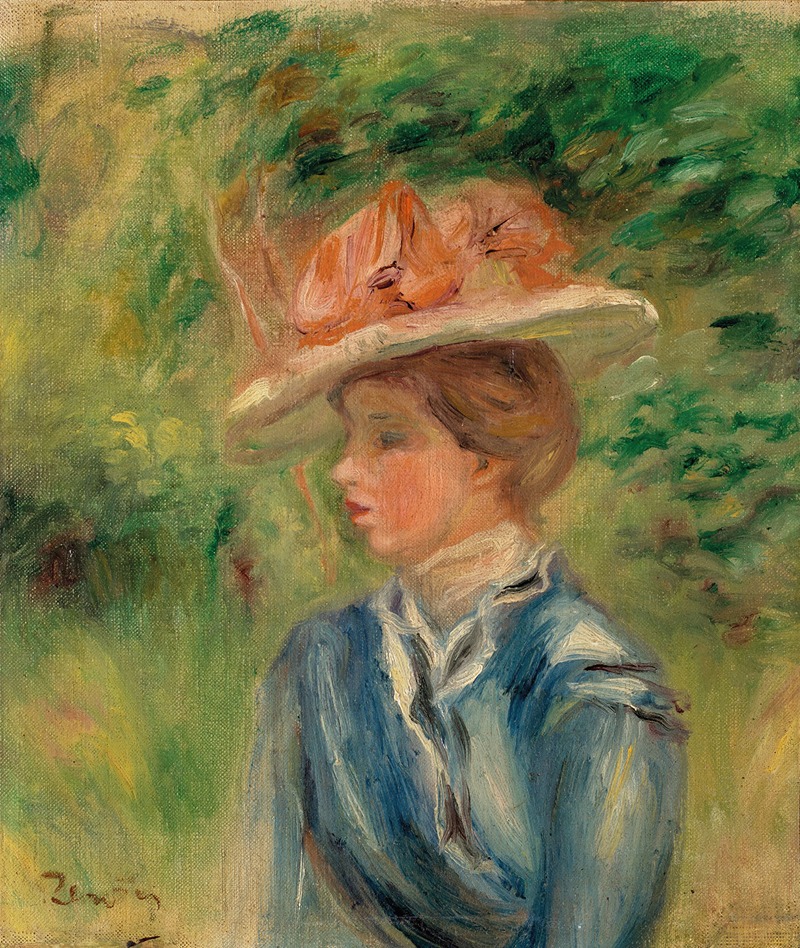
Jeune femme au chapeau fleuri
A hand-painted replica of Pierre-Auguste Renoir’s masterpiece Jeune femme au chapeau fleuri, meticulously crafted by professional artists to capture the true essence of the original. Each piece is created with museum-quality canvas and rare mineral pigments, carefully painted by experienced artists with delicate brushstrokes and rich, layered colors to perfectly recreate the texture of the original artwork. Unlike machine-printed reproductions, this hand-painted version brings the painting to life, infused with the artist’s emotions and skill in every stroke. Whether for personal collection or home decoration, it instantly elevates the artistic atmosphere of any space.
Pierre-Auguste Renoir's "Jeune femme au chapeau fleuri" is a captivating example of the artist's impressionist style, characterized by its vibrant colors and delicate brushwork. Renoir, a leading figure in the Impressionist movement, is renowned for his ability to capture the beauty and essence of his subjects, often focusing on scenes of leisure and portraits that convey a sense of warmth and intimacy.
"Jeune femme au chapeau fleuri," which translates to "Young Woman in a Flowered Hat," is a portrait that exemplifies Renoir's fascination with the human form and his skill in rendering textures and light. The painting features a young woman adorned with a hat decorated with flowers, a common motif in Renoir's work that highlights his interest in fashion and the interplay of colors. The use of a flowered hat not only adds a decorative element to the composition but also serves to frame the subject's face, drawing the viewer's attention to her expression and features.
Renoir's technique in this painting is typical of his impressionist approach, employing loose brushstrokes that blend colors seamlessly, creating a soft focus that suggests rather than defines the details. This method allows the viewer to engage with the painting on an emotional level, as the impression of the subject is conveyed through the overall harmony of colors and forms rather than precise lines. The palette used in "Jeune femme au chapeau fleuri" is rich and varied, with warm tones that enhance the subject's complexion and the vibrancy of the flowers, creating a sense of vitality and freshness.
The context of the painting's creation is rooted in the late 19th century, a period when Renoir was deeply involved with the Impressionist movement. This era was marked by a shift away from the rigid structures of academic art towards a more spontaneous and personal expression. Renoir, along with his contemporaries, sought to capture the fleeting effects of light and atmosphere, often painting en plein air to better observe and depict the natural world. While "Jeune femme au chapeau fleuri" is a studio work, it retains the spontaneity and immediacy that are hallmarks of Impressionism.
Renoir's portraits, including "Jeune femme au chapeau fleuri," often reflect his interest in capturing the charm and elegance of his subjects. The young woman in this painting is portrayed with a sense of grace and poise, her serene expression suggesting a moment of contemplation or introspection. This focus on the individual's personality and mood is a testament to Renoir's ability to convey the inner life of his subjects through his art.
The painting is part of a broader body of work that showcases Renoir's mastery of portraiture and his enduring interest in the depiction of women. Throughout his career, Renoir painted numerous portraits of women, each imbued with a sense of individuality and character. "Jeune femme au chapeau fleuri" stands out as a testament to his skill in capturing the subtleties of human expression and the beauty of everyday life.
In summary, "Jeune femme au chapeau fleuri" by Pierre-Auguste Renoir is a quintessential example of Impressionist portraiture, highlighting the artist's talent for capturing the essence of his subjects through color, light, and form. The painting remains a celebrated work within Renoir's oeuvre, admired for its elegance, warmth, and the timeless appeal of its subject.





